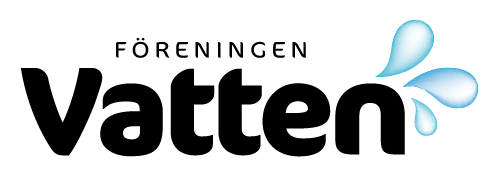EVALUATION OF LABORATORY BATCH TESTS FOR ENHANCED BIOLOGICAL PHOSPHORUS REMOVAL
Phosphorus release batch tests can be used for evaluation of an activated sludge process with enhanced biological phosphorus removal (EBPR or bio-P). The test method is described and different aspects of the result evaluation are discussed. The concentration of dissolved phosphorus in a sample from the activated sludge is followed during an anaerobic period within […]
STRATEGI FÖR FRAMTIDA BEHANDLING AV SPILLVATTEN FRÅN GETINGE I HALMSTADS KOMMUN / Strategy for future treatment of sewage water from the village Getinge in the community of Halmstad, Sweden
The strategic choice between different future solutions of sewage treatment in the area and village of Getinge has been evaluated from economical and environmental viewpoints. The study could identify three alternative solutions for the treatment of the sewage, which were compared from operational, economical and environmentalpoints of view. The first alternative, A, described the present […]
DRICKSVATTENFÖRSÖRJNING I GLASGOW, LONDON OCH ÖVRIGA STORBRITANNIEN 1800–1850 – EN ÖVERSIKT / Drinking water supply in Glasgow, London and other parts of Great Britain 1800–1850 – a review
The development of drinking water supply in the early industrial cities in Great Britain is reviewed. The special feature of slow sand filtration, that was developed in Glasgow in the very beginning of the 19th century and diffused to the rest of Great Britain during the first half of the 19th century is described in […]
SHORT TERM CHEMICAL TREATMENT OF BIOLOGICAL SLUDGE WITH FILAMENTOUS ORGANISM TYPE 021N
When sludge bulking occurred in the new wastewater treatment plant for the abattoir in Kalmar, a quick solution to inhibit and harm the filamentous organism Type 021N was to be found. Five different kinds of chemicals (NaOCl, H2O2, FeCl3, PAX-XL60 and Ecofloc) were tested in two short term lab-tests. Each chemical was first tested with […]
INTEGRATION AV VÅTMARK I ETT MODERNISERAT AVLOPPSRENINGSVERK, MÖJLIGHETER OCH BEGRÄNSNINGAR / Integration of a constructed wetland with an upgraded treatment plant, perspectives and limitations
Nynäshamn community has upgraded the main wastewater treatment plant by adding an activated sludge stage, in order to handle septic sludge emanating from the southern suburban area of Stockholm. The upgraded plant was taken into operation in 2003.The plant was earlier based on a treatment chain containing pre-treatment, chemical precipitation and a constructed wetland. The […]
MIKROBIOLOGISK OCH KEMISK OXIDATION AV MANGAN I RÅVATTEN / Microbial and chemical oxidation of manganese in raw water
The oxidation kinetics of manganese in a sandfilled column has been studied. The oxidation pathways can be both chemical and microbiological. The rate limiting step during chemical oxidation of manganese is the autocatalysis of manganese (II). The time to half the manganese(II) concentration from 1,1 to 0,55 mg/l at pH 8,5 was calculated to 30 […]
VAD ÄR FISKEN VÄRD? FRITIDSFISKET I EMÅNS AVRINNINGSOMRÅDE / What is the value of fish? Recreational fishing in the River Emå Catchment
The Emå River is one of the largest catchments in South Sweden. Efforts are made to develop sustainable tourism in the area. Recreational fishing is an important activity, that will have a potential to grow. The Emå River has a special and famous attraction, namely two species of salmon (salmo trutta and salmo salar) of […]
KANALERNA I GÖTEBORG – VATTEN OCH FISKAR – EN MILJÖBIOLOGISK STUDIE / The Canals in Göteborg – Water and Fish – an Environmental Biology Study
Investigations and studies of documentation show that the situation for the fish and the water quality in the Göteborg canals are better than 100 years ago thanks to the early construction and successive improvements of the sewer system. The river Göta älv has nowadays the greatest influence of the water quality in the canals due […]
GRÖNA TAKS PÅVERKAN PÅ DAGVATTENKVALITÉN / Green roofs influence on runoff water quality
The influence of extensive sedum-moss green roofs on runoff water pollution loads was studied for four full scale installations located in southern Sweden. The aim of the study was to ascertain whether the green roof behaves as a sink or a source of pollutants on annual basis and if runoff quality depends on a roof’s […]
MICROSCREENING FOR STORMWATER TREATMENT
A competitive system for stormwater treatment should provide efficient particle removal, small footprint, rapid start-up, robustness, cost effectiveness and flexibility. Chemical pre-treatment followed by microscreening could fulfil these requirements. Thus the potential in such a system was investigated within the framework of a project involving Kemira Kemi AB, Hydrotech AB and the Department of Water […]
